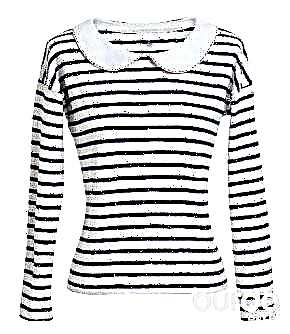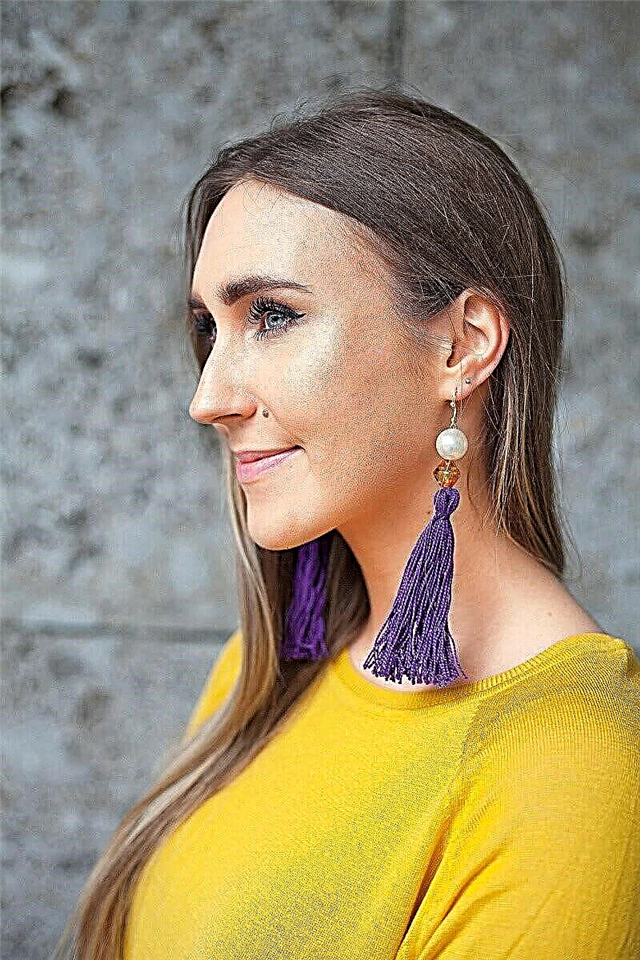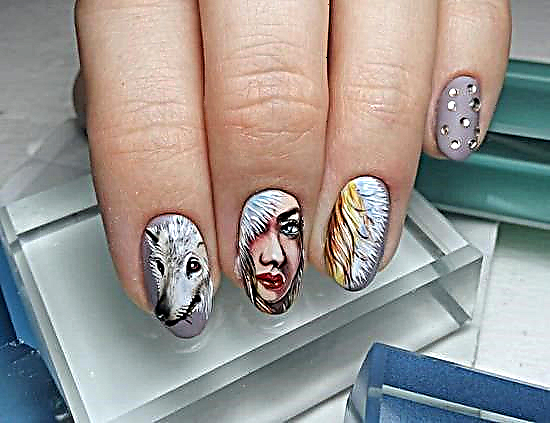In order for a coat or jacket to have an impeccable look, not only a successful pattern is necessary, but also the right approach to additional reinforcement of individual parts of the product with duplicate gaskets.

Shelf
duplicate the entire gasket. The detail of the paper pattern for the "patch" should be made independently.  This is not at all difficult: if the model has a relief seam, glue the details of the paper pattern along the seam line, starting from the edge of the armhole, and then draw a laying line. Remake the patch as a separate part.
This is not at all difficult: if the model has a relief seam, glue the details of the paper pattern along the seam line, starting from the edge of the armhole, and then draw a laying line. Remake the patch as a separate part.  If a tuck is provided on the shelf from the shoulder or from the neck, lay the tuck on the gasket parts and cut a “patch” along it without allowances for the seams from the soft, non-ironing gasket. Using the same part of the paper pattern, from the ironing non-woven fabric H 410, obliquely cut out the second gasket - with allowances for the seams along the sections of the shoulder and neck, and below 1-1.5 cm shorter than the first. After sewing and ironing embossed seams or darts, put on the shelf the first “patch” from the non-ironing pad, precisely aligning the upper and side sections of the “patch” with the seam lines on the shelf.
If a tuck is provided on the shelf from the shoulder or from the neck, lay the tuck on the gasket parts and cut a “patch” along it without allowances for the seams from the soft, non-ironing gasket. Using the same part of the paper pattern, from the ironing non-woven fabric H 410, obliquely cut out the second gasket - with allowances for the seams along the sections of the shoulder and neck, and below 1-1.5 cm shorter than the first. After sewing and ironing embossed seams or darts, put on the shelf the first “patch” from the non-ironing pad, precisely aligning the upper and side sections of the “patch” with the seam lines on the shelf.  Then, on top of the first “patch”, apply the second, from the ironing non-woven fabric and iron it.
Then, on top of the first “patch”, apply the second, from the ironing non-woven fabric and iron it.
How to choose a nonwoven: lights and recommendations
Backrest
reinforce the laying of non-woven in the neck, shoulders and armholes. Cut out the spacer with the same direction of the shared thread as the back. On top of the marked line of the shoulder seam, additionally iron the strip of nonwoven kantenband band. The kantenband band should be slightly shorter than the shoulder seam along the back (equal to the length of the shoulder section of the shelf).  When ironing, stretch the strip of strip slightly and, accordingly, slightly back the back.
When ironing, stretch the strip of strip slightly and, accordingly, slightly back the back.
Lapels
attract attention in the first place, and therefore their processing should be especially thorough. In order for the lapels to lie beautifully, their corners should be additionally strengthened with a non-woven fabric H 410, and slightly bend the folds on the stripes of the canopy non-woven Candenband. This is done as follows: cut the interlining for the lapel corner along the oblique without allowances for seams along the front and upper sections of the lapel and exactly to the line of its bend. Press the lining of the non-woven kantenband to the shelf next to the fold of the lapel, starting at the shoulder seam and ending without reaching approx. 5 cm to the side cut.  Cut a strip of gasket approx. 1.5-2 cm shorter than this distance and stretch it when ironing to the required length, fitting a shelf, respectively, along the fold line. Thanks to this treatment, the lapels lie flawlessly. With high lapels, the seam allowances on the seam along the upper cut of each lapel and on the stitching of the collar at the start point of the stitching of the collar diverge and form the so-called "empty" corner.
Cut a strip of gasket approx. 1.5-2 cm shorter than this distance and stretch it when ironing to the required length, fitting a shelf, respectively, along the fold line. Thanks to this treatment, the lapels lie flawlessly. With high lapels, the seam allowances on the seam along the upper cut of each lapel and on the stitching of the collar at the start point of the stitching of the collar diverge and form the so-called "empty" corner.  To ensure that the thickness of the allowances is uniform, iron a small piece of the nonwoven volumenfliz H 630 gasket at this angle. The shape of the piece depends on the shape of the lapel, and you must determine it yourself. To do this, cut the upper part of the lapel from the paper with 1 cm seam allowances. Then cut the allowances into a corner to the seam line and unscrew the seam allowances.
To ensure that the thickness of the allowances is uniform, iron a small piece of the nonwoven volumenfliz H 630 gasket at this angle. The shape of the piece depends on the shape of the lapel, and you must determine it yourself. To do this, cut the upper part of the lapel from the paper with 1 cm seam allowances. Then cut the allowances into a corner to the seam line and unscrew the seam allowances.  The "free section" between the allowances will exactly match the desired shape of the gasket piece. A good fit in the shoulders will provide additional reinforcement of the area of each shoulder with the so-called patch, which starts from the neck and reaches the transverse mark of the sleeve in the armhole.
The "free section" between the allowances will exactly match the desired shape of the gasket piece. A good fit in the shoulders will provide additional reinforcement of the area of each shoulder with the so-called patch, which starts from the neck and reaches the transverse mark of the sleeve in the armhole.
Sleeves
They sit especially well if they are strengthened by laying with interlining nonwoven volumenfliz 248.  If the sleeve is two-sutured, first glue the details of the pattern along the elbow seam and then draw a laying line on them (Figure 8). Reshoot the gasket part as a separate part and cut through it volumenfliz 248 gasket without allowances for the seams. Then, using the same pattern, open the nonwoven G 405 or H 410 gasket with the same direction of the shared thread as the sleeve, with an allowance for the seam along the upper cut, and 1.5-2 cm shorter below the pattern.
If the sleeve is two-sutured, first glue the details of the pattern along the elbow seam and then draw a laying line on them (Figure 8). Reshoot the gasket part as a separate part and cut through it volumenfliz 248 gasket without allowances for the seams. Then, using the same pattern, open the nonwoven G 405 or H 410 gasket with the same direction of the shared thread as the sleeve, with an allowance for the seam along the upper cut, and 1.5-2 cm shorter below the pattern.  After sewing and ironing of the elbow suture, place the volumenfliz gasket from the inside of the sleeve along the seam line along the cord, and over it - lay the non-woven fabric and iron.
After sewing and ironing of the elbow suture, place the volumenfliz gasket from the inside of the sleeve along the seam line along the cord, and over it - lay the non-woven fabric and iron.
How to fit a sleeve: a master class
Collar
also acquires a better shape and appearance if it is strengthened with a non-woven liner.Fix the gasket not only the lower, but also the upper collar. The basic rule is as follows: the gasket should be cut with the same direction of the shared thread as the part made of fabric. However, if the lower collar with lapels is cut along the lobar, then the gasket to it is cut along the oblique and with the middle seam. Very wide, turn-down collars that can be lifted, and high stand-up collars acquire the necessary resistance, without giving the impression of being severely starched, if the lower parts of these collars are additionally reinforced with a volumeflyz.
Neat edges
It turns out if along them to additionally iron the gasket. The bottom hem will also not warp if reinforced with this gasket.
Important:
non-woven kantenband should always be ironed over the marked seam line or hem line respectively.
Table of basic cushioning materials for clothing
Photo: BurdaStyle.ru



